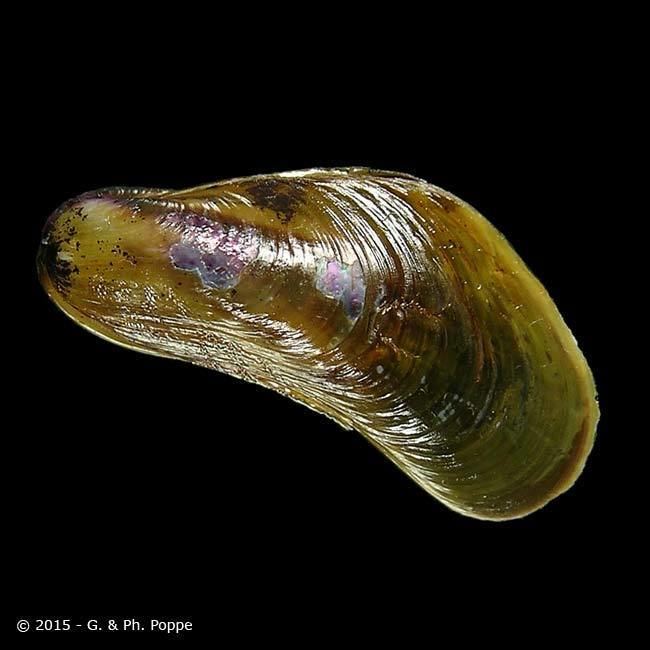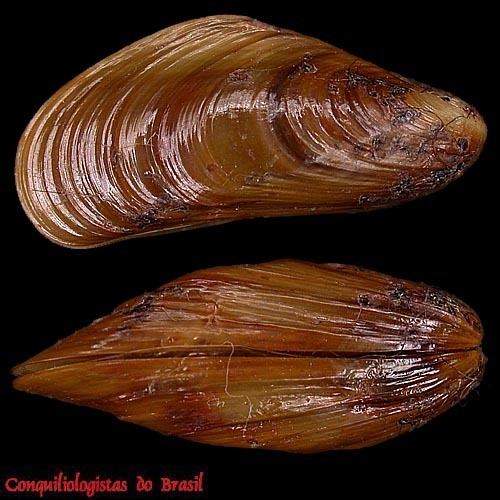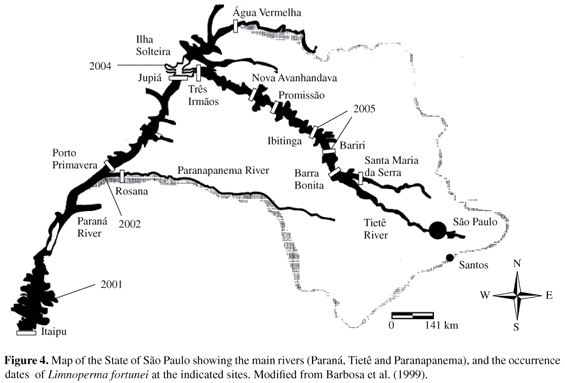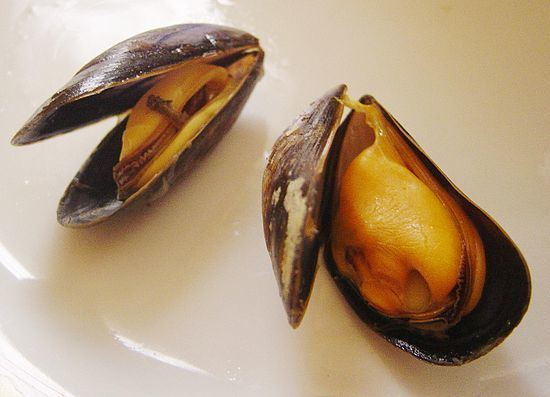Scientific name Limnoperna fortunei Higher classification Limnoperna Subclass Heterodonta | Order Mytiloida Genus Limnoperna Rank Species | |
 | ||
Similar Bivalvia, Molluscs, Mussels, Corbicula fluminea, Dunker | ||
Limnoperna fortunei, the golden mussel, is a medium-sized fresh water bivalve mollusc in the family Mytilidae, the true mussels. The native range of the species is China, but it has accidentally introduced to South America where it has become an invasive species. It is considered to be an ecosystem engineer because it alters the nature of the sediment at the bottom of lakes and dramatically changes the associated invertebrate communities.
Contents

Description

The pink head mussel can grow to a length of about 45 mm 45 millimetres (1.8 in) but a more usual size is 20 to 30 millimetres (0.79 to 1.18 in). The general colour of the shell is golden brown, the umbones are very close to the end of the valves and there are no hinge teeth. The mantle is fused on the dorsal side and the shell is attached to the substrate by byssal threads.
Distribution

The golden mussel is native to China. Between 1965 and 1990, it spread into Hong Kong, Taiwan and Japan. In 1989 or 1990 it appeared in Argentina. It flourished there and by 2006 it had spread to Uruguay, Paraguay, Bolivia, and Brazil. It is considered an invasive species in South America and is expected to spread further.
Ecology

The golden mussel is a filter feeder. When it occurs in great numbers it filters large quantities of water and has a significant effect on the amount of suspended material in the water column. Its faeces add to the sediment and supply abundant food for detritivores. It has a planktonic larval stage and populations can grow fast. The adults live close together in aggregations that alter the substrate of the lakebed. When this happens there is a considerable increase in associated invertebrates that can make use of the nooks and crannies among the mussels, and feed on their faeces. However, there is a concomitant great decline in the presence of native freshwater mussels in the family Unionidae.

In a research study undertaken in the Rio Tercero Reservoir in Mexico,it was found that the preferred habitat of the golden mussel was stones and gravel. It tolerated sandy bottoms and generally avoided silt. However, one of the largest aggregations found was on a plastic bottle on a silty bottom. On sandy bottoms, aggregations were often attached to large sand grains that were glued together with byssus threads. Nestling among the mussels were a wider range of invertebrate species than were found in the surrounding areas. A particularly noticeable increase occurred in gastropods, leeches, caddisflies, mayfly larvae and midge larvae. The only invertebrates that decreased in number were the segmented worms (Oligochaeta) which burrow in the sediment and perhaps found it depleted of oxygen by the degradation of the mollusc faeces.
The study compared the golden mussel with the zebra mussel (Dreissena polymorpha) which is another aggressive invasive species. The golden mussel is more tolerant of increased salinity, low pH values and higher temperatures than the zebra mussel. The study considered the likely effect if the golden mussel were to reach North America. It seemed likely that it would be able to colonise water masses that did not suit the zebra mussel, and thus would devastate native unionids in their few remaining strongholds.
